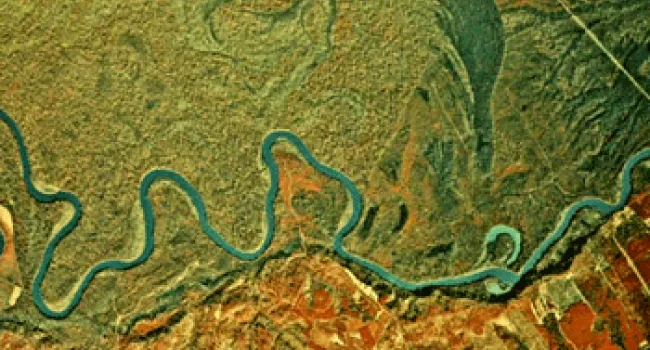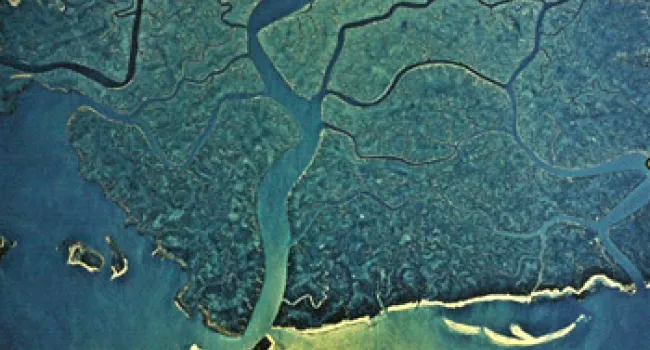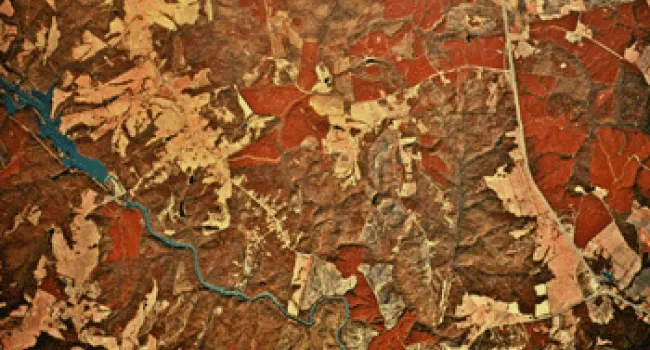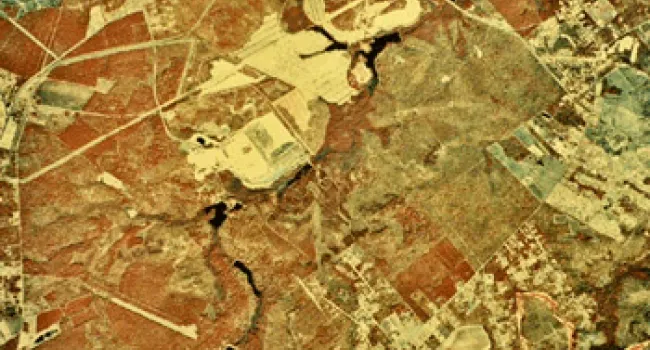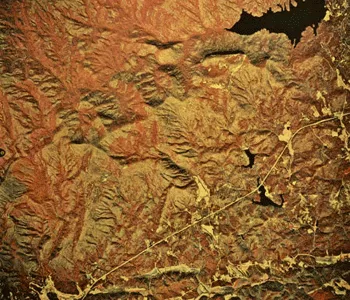
Aerial photograph courtesy of SC Dept. of Natural Resources, Map Lab
Featured Artists: Clemson Nature-Based Art | Nancy Basket | Nils Udo
The rocky Blue Ridge of upstate South Carolina is the smallest landform region in the state. The area's high hills and low mountains (highest is 3,560-foot Sassafras Mountain) are home to the Cherokee people, once the largest group of Native Americans in the southeast. Traditions and customs of the Cherokee, and Scots Irish settlers who arrived in the 17th century, pervade the cultural landscape of the Blue Ridge. The area is home to the most diverse community of animals and plants in the state, and is popular among hikers, naturalists, hunters, and anglers. Fast moving, whitewater rivers of the Blue Ridge are a playground for canoeists and kayakers.
Landforms
The landscape of the Blue Ridge is mountainous, rugged and often rocky. Over 350 million years ago, the mountains of the Blue Ridge formed as continental plates, or large pieces of the earth's crust, shifted and crunched into one another. When the plates collided, they thrust up mountains of metamorphic rock. After millions of years of wind and water erosion, the mountains are now rounded off and topped with trees. Clear, fast running rivers and waterfalls cut through the landscape.
Vegetation
The Blue Ridge contains the most diverse group of animals and plants in the state. Hardwood forests of the Blue Ridge area are the result of cooler, moister climates found at higher elevations. The American chestnut, once a common upcountry hardwood, was decimated by a fungal disease in the early 20th century. Today, forests of hickory, oak, white pine, beech, hemlock and tulip poplar cover the landscape. Shrubs such as azalea and rhododendron are common in Blue Ridge forests.
Agriculture
Nearly 90 percent of the Blue Ridge is forested, leaving little land for farming. Timber from these unique hardwood forests is one of the area's most valuable organic resources. Steep and rugged terrain makes it difficult to plant row crops, and erosion can be severe. Corn, hay, and apples are grown on small farms found in coves and valleys.
